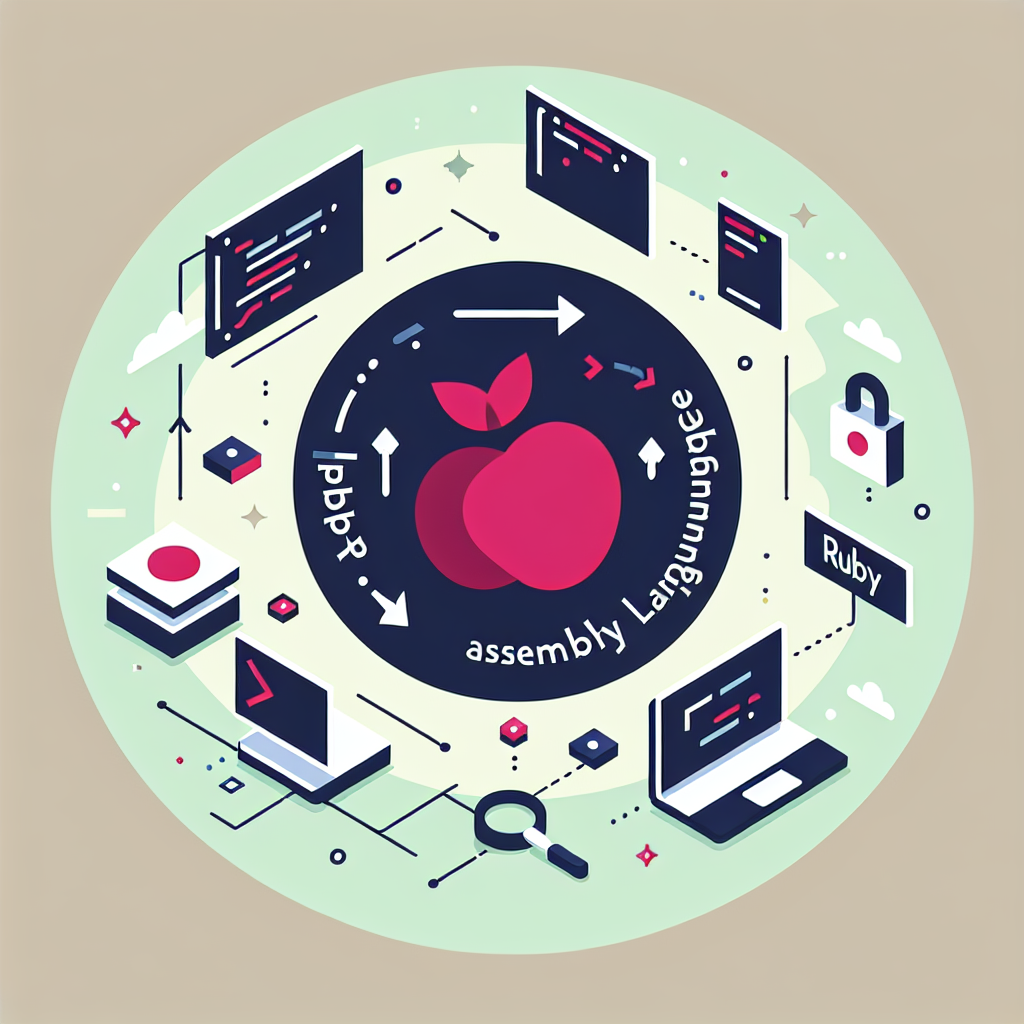Convert Ruby to Assembly Language: Fast & Easy Tool
Convert Ruby to Assembly language seamlessly with our advanced tool. Optimize your codes performance and efficiency. Discover the power of seamless translation!
Source Code
Converted Code
Output will appear here...
Transform Ruby code into efficient assembly language with our cutting-edge conversion tool. Perfect for developers seeking optimized performance and low-level system control, this tool streamlines the translation process, enhancing execution speed and resource management. Ideal for system programming, embedded applications, and performance-critical projects.

Ruby to Assembly Language Conversion Tool Link to this section #
Transforming Ruby code into assembly language can streamline performance optimization and enhance low-level understanding of code execution. This tool facilitates converting high-level Ruby scripts into efficient assembly language, bridging the gap between abstract code and tangible hardware instructions.
Key Features Link to this section #
- Automatic Translation: Quickly convert Ruby scripts into assembly language, optimizing for specific architectures.
- Performance Insights: Gain insights into how Ruby constructs translate into machine-level instructions, aiding in performance tuning.
- Customizable Output: Choose between different assembly dialects like x86, ARM, or MIPS to fit your hardware requirements.
How It Works Link to this section #
- Input Ruby Code: Paste or upload your Ruby script into the tool.
- Select Target Architecture: Choose the desired assembly language architecture (e.g., x86, ARM).
- Generate Assembly Code: Click 'Convert' to produce the assembly language equivalent.
Example Link to this section #
Here is a simple Ruby code snippet and its assembly conversion:
# Ruby code
def add(a, b)
a + b
end
Converted to generic assembly language:
; Assembly Language
section .text
global _add
_add:
mov eax, edi ; Move first argument to eax
add eax, esi ; Add second argument
ret ; Return result
Benefits Link to this section #
- Enhanced Debugging: Understanding how Ruby code translates to assembly can aid in identifying performance bottlenecks and bugs.
- Educational Value: Ideal for learning how high-level constructs map to low-level instructions.
Related Topics Link to this section #
- Intermediate Representation: Explore how compilers translate Ruby into an intermediate form before generating assembly.
- Compiler Design: Learn about the stages of compilation and how they apply to Ruby and assembly language.
For more information on Ruby and assembly language, consider visiting Ruby Documentation and Intel’s x86 Instruction Set Reference.
This tool is invaluable for developers aiming to delve deeper into the performance aspects of their Ruby applications, providing a clear view of the underlying system operations.
Frequently Asked Questions
Why would someone want to translate Ruby code to assembly language?
Translating Ruby code to assembly language can help developers understand how high-level code is executed at the machine level, optimize performance-critical sections of the code, and gain insights into the underlying system architecture.
Is it possible to directly convert Ruby code to assembly language?
Directly converting Ruby code to assembly language is not straightforward since Ruby is a high-level, dynamically-typed language. Typically, Ruby code is interpreted or compiled to bytecode by the Ruby interpreter (such as MRI), and then executed by a virtual machine. However, understanding the intermediate steps and using tools like disassemblers for the Ruby interpreter can reveal assembly language equivalent instructions.
What tools can assist in examining Ruby code at the assembly level?
Tools like RubyVM::InstructionSequence in MRI Ruby can show you the bytecode for Ruby methods, which you can then analyze. Additionally, using a disassembler on the compiled binary or leveraging tools like GDB can provide insights into the assembly instructions executed by the processor.